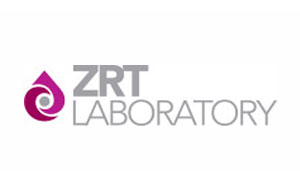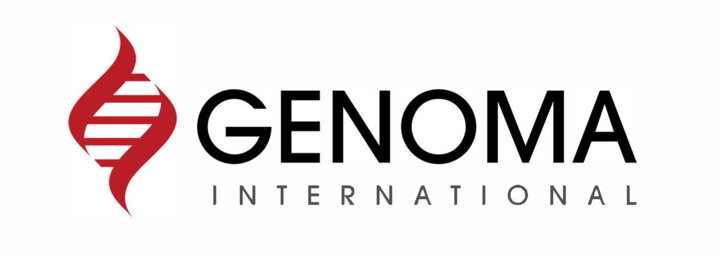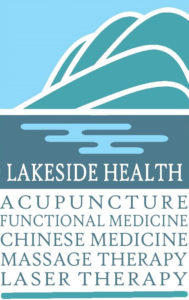Functional or personalized medicine involves understanding a person’s susceptibility to disease by first measuring their biochemistry, followed by therapies based on that analysis. It can involve the measurement of nutrient and vitamin levels, their microbiome, genome, hormones, and metabolites that provide clues to the person’s unique biochemistry. Following is a sample of some of the tests Lakeside Health finds useful.

Vitamin D Test
25-Hydroxyvitamin D, known for its role in bone health and calcium absorption, appears to affect many other conditions like immune function, neurodegenerative and cardiovascular issues. It occurs in two forms: D3 is obtained from animal food sources and through sun exposure, and D2 is obtained through vegetable food sources. Doctor’s Data uses the LC/MS QQQ method to measure Vitamin D2, D3 plus your total Vitamin D.
Cardio-Metabolic
Cardiovascular disease is the second leading cause of death in North America. Metabolic syndrome is a risk factor for cardiovascular disease and renal damage. Early detection and reduction of risk factors are crucial. Doctor’s Data offers comprehensive profiles, evaluating 16 key factors and biomarkers for early detection and targeted treatment.
Urine Amino Acid
Amino acid analysis aids in the identification of dietary protein adequacy and amino acid balance, gastrointestinal dysfunctions, forms of protein intolerance, vitamin and mineral deficiencies, renal and hepatic dysfunction, psychiatric abnormalities, susceptibility to inflammatory response and oxidative stress, reduced detoxification capacity and many other inherent and acquired disorders in AA metabolism. Plasma is traditionally used to assess the status of essential AA while urine analysis provides more information regarding AA wasting and aberrant metabolism associated with co-factor insufficiencies.
DNA Oxidative Stress
Oxidative stress plays a detrimental role in various physiological processes, aging, and cancer. DNA oxidation is a common occurrence. Measuring 8-OHdG in urine quantifies ongoing oxidative damage. Elevated 8-OHdG levels indicate increased oxidative stress, necessitating identification of stress sources and assessment of the primary antioxidant, glutathione. Addressing oxidative stress is crucial for health and longevity. This non-invasive test involves only a single first thing in the morning urine sample.
Celiac and Gluten Sensitivity
Celiac disease is caused in genetically predisposed individuals by abnormal intestinal permeability and abnormal immune response to gluten, a protein complex found in wheat, barley, spelt and rye. The inflammatory autoimmune response damages the lining of the small bowel and is associated with diarrhea, bloating, fatigue, nutritional deficiencies, and systemic autoimmune conditions. Gluten sensitivity can cause similar symptoms but without the same level of tissue damage. The Celiac & Gluten Sensitivity profile from Doctor’s Data helps differentiate between Celiac Disease and gluten sensitivity.

Dietary Antigen Testing- P88
The P88-DIY Dietary Antigen Test is the only report to combine IgE, IgG, IgG4 and complement (C3d) reactions to 88 foods all with the convenience of a finger stick but better, a powerful micro-sampling device! Traditional finger sticks typically have you stick your finger, and then collect on a card or piece of paper. While this is a start, there is not nearly enough blood extracted to run tests with many markers. The P88-DIY looks at 4 ways the body reacts to 88 foods, which means enough sample must be obtained to run 352 independent tests!
![]()
Stool Analysis
The GI Standard Profile builds upon the GI Basic Profile offering 92 markers from 11 GI Testing Categories offering a more robust profile for a complete view of the GI Microbiome, providing the insights needed to get on the road to wellness.
Mycotoxin Analysis
Mycotoxins are toxic metabolites naturally produced by fungal organisms (molds). Mycotoxins are well-known and growing in popularity thanks to their harmful effect on human cells, causing cellular dysfunctions associated with various symptoms and diseases.
Organic Acids Profile
Vitamin deficiencies and imbalances may produce a range of health issues, including fatigue, mood changes, digestive problems, and others. Our comprehensive urinary metabolic profile measures 36 organic acids to create a unique patient biochemistry profile that reflects how well the body is obtaining and utilizing nutrients. A customized diet and lifestyle plan can then be established to address to specific nutritional needs.
Environmental Pollutants
Unfortunately, pollutants and chemicals are commonplace in our air, water, and food, and in many of the products we use. Long-term exposure to these toxins is known or suspected to have serious health consequences. The Environmental Pollutants Profile provides a quantitative measurement of 14 select metabolites that can help define an individual’s toxic burden and provide valuable information for a targeted nutritional and detoxification intervention.
NutriStat
The Nutritional profiles offer comprehensive nutritional assessments to provide insights into nutritional deficiencies and imbalances.

D-Spot Vitamin D
Vitamin D is more hormone than vitamin and in recent years it’s become clear that the biological effects of this powerful steroid go well beyond vitamin status. D-Spot measures 25-hydroxy vitamin D3, the standard serum test for vitamin D, in a convenient dried blood spot.
Fatty Acid Profile
The Fatty Acid Profile measures the percentage of fatty acids in red blood cells from a convenient dried blood spot. Measurements include the Omega-3 Index and Omega-3 score to assess for heart disease risk, the ratio of Arachidonic Acid (AA) to Eicosapentaenoic acid (EPA) as a marker of inflammation, total Omega-3 fatty acids, total Omega-6 fatty acids along with mono-unsaturated fatty acids, trans fatty acids and saturated fats. find out more…
Hair Element Analysis
Tests for 45 toxic and essential elements. Hair element analysis reports nutrient status (essential elements)and toxic element exposure over time (according to hair length). The interpretation provided assesses the distribution patterns of the elements and explains likely causes. It’s a simple and inexpensive place to begin when concerns are present regarding nutrient balance and toxicity. find out more…

GI-MAP™ – GI Microbial Assay Plus DNA-based Stool Analysis and Digestive Markers
The GI-MAP stool test utilizes cutting edge, Quantitative PCR technology to provide a true DNA/PCR based stool test. This technology has high sensitivity, specificity and a rapid turnaround. The GI pathogens include bacteria, parasites and viruses. Continuing with this platform, the GI-MAP measures opportunistic organisms, normal flora, fungi, parasites and antibiotic resistance genes. And the Plus refers to immunologic markers for GI health and function including SIgA, Elastase, Calprotectin and Anti-gliad in testing. find out more…

DUTCH Test – Dried Urine Test for Comprehensive Hormones
Do you have concerns about your hormonal health? Are you struggling to understand the reasons for your symptoms? The DUTCH is a comprehensive test you can take in the comfort of your own home. It’s far superior to saliva hormone testing in most instances and provides the entire hormonal metabolic cascade to ensure the health promoting pathways. In addition, measures of several neurotransmitters and vitamins, the anti-oxidant glutathione, 24 hour melatonin, and a measure of oxidative stress are included. Both female and male panels are available. find out more…

ASI – Adrenal Stress Index
DiagnosTechs’ ASI is a comprehensive panel that assesses adrenal function by measuring cortisol and five other hormones – insulin, DHEA and DHEA-S, secretory IgA,17-OH-progesterone and wheat gluten SIgA – through saliva over a 24 hour period. This is an ideal test for people dealing with chronic stress and stress-related symptoms such as insomnia, anxiety and fatigue. This test is useful in evaluating glycemic dysregulation, allergies and autoimmune disorders. find out more…

Organic Acids Test – OAT
The OAT provides an accurate metabolic snapshot of what is going on in the body. Besides offering the most complete and accurate evaluation of intestinal yeast and bacteria, it also provides information on important neurotransmitters, vitamin and nutritional markers, glutathione status, oxalate metabolism, Krebs cycle abnormalities, antioxidant deficiencies, fatty acid acid metabolism, and more. find out more…
GPL-TOX Profile (Toxic Non-Metal Chemicals)
Everyday, we are exposed to hundreds of toxic chemicals through products like pharmaceuticals, pesticides, packaged foods, household products, and environmental pollution. As we have become more exposed to chemical-laden products and to toxic chemicals in food, air, and water, we have been confronted with an accelerating rate of chronic illnesses like cancer, heart disease, chronic fatigue syndrome, chemical sensitivity, autism spectrum disorders, ADD/AD(H)D, autoimmune disorders, Parkinson’s disease, and Alzheimer’s disease.
- GPL-TOX screens for 172 different environmental pollutants using 18 different metabolites, all from a single urine sample.
- GPL-TOX also includes Tiglylglycine, a marker for mitochondrial damage, which is often seen in chronic toxic chemical exposure.

Heavy Metals & Nutrients. Dried Urine. Dried Blood Spot.
Heavy metal exposure is on the rise. Common sources include cigarettes, seafood, rice, well water, vaccinations & dental fillings.
These toxic elements can significantly increase our risk of developing conditions like dementia, infertility, diabetes and cancer. They are also known to cause damage to the liver, kidneys and brain, as well as the cardiovascular, nervous and endocrine systems.
Essential elements are abundant, too, and only healthy when they are within optimal ranges. Nutrients like copper, iodine, magnesium, selenium and zinc are critical for enzymes that synthesize neurotransmitters and activate hormones. Bromine and lithium, while not currently classified as “essential” elements, have been shown to play a positive role in health but are also potentially toxic at excessive levels.
Why test both blood and urine? Heavy metals and essential elements affect different systems of the body, so it makes sense that they can’t all be measured in the same body fluid. ZRT tests using the most scientifically appropriate medium – either urine or dried blood spot – for our metals & nutrients profiles.
For example, urinary cadmium is the best measure of accumulated exposure, while blood spot assesses only recent exposure. Blood is the only appropriate medium to assess lead exposure, and urine is the only appropriate medium for arsenic.

Hydrogen Methane Breath Test for IBS / SIBO
The Small Intestine Bacterial Overgrowth (SIBO) Breath Test provides valuable information in the diagnosis of small bowel overgrowth of bacteria, otherwise known as SIBO. Small Intestine Bacterial Overgrowth describes a condition in which bacteria from the large intestine have migrated to the small intestine. SIBO can also occur when bacteria native to the small intestine have simply overgrown. Using a breath test to diagnose SIBO is simple and non-invasive. find out more…

Every Disease has a story to tell…
Genomics helps you rewrite it.
Science tells us that most chronic diseases are the result of a collision course between genes and environment – including diet, lifestyle and medications. While we can’t change our genes, we CAN change the environment we put them in. Using comprehensive genomic testing, you are empowered to work with your DNA, not against it. DNA-directed interventions help rewrite your stories. That’s the power of genomics.
Sample collection is easy – a simple cheek swab. DNA is then analyzed in a CLIA and CAP certified lab, using a proprietary selection of genes that meet strict criteria: each gene variation evaluated must be well-researched for its impact on health, plus have evidence-based action steps that can be used to modify the potential outcome.



